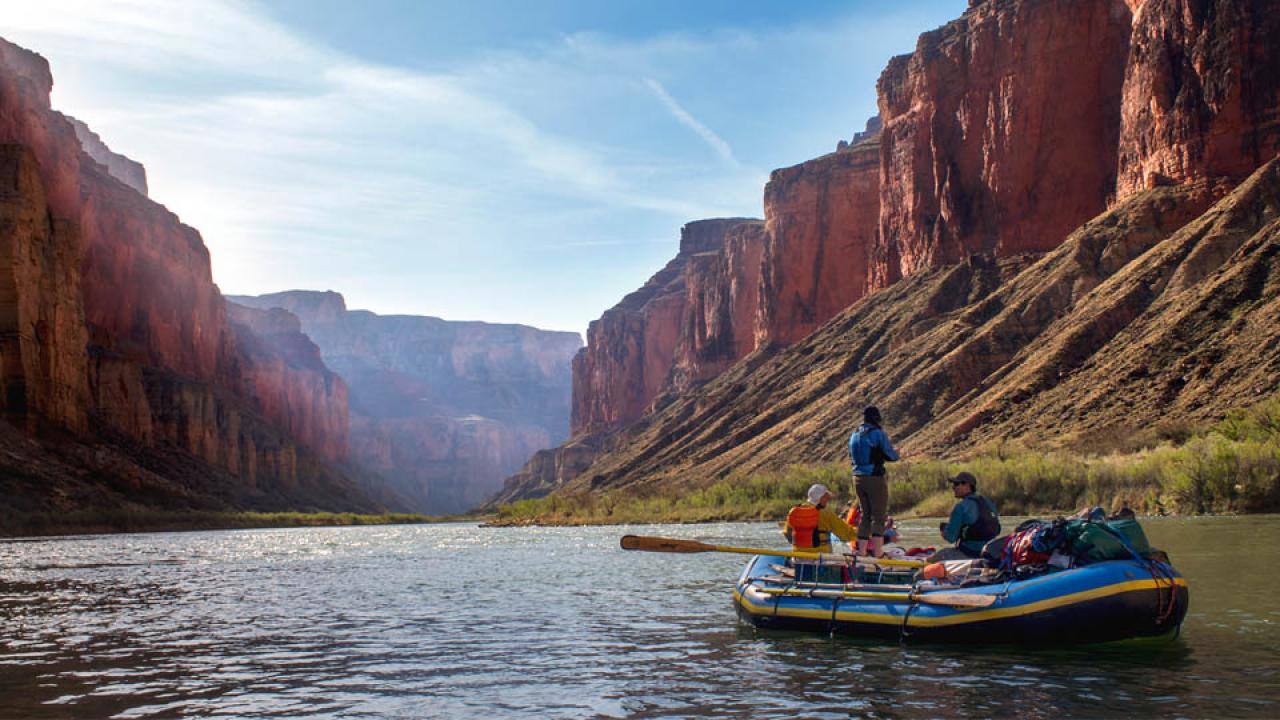As 2016 winds to a close, the team at UC Davis News and Media Relations thought we would take a look back at some of the year’s most uplifting stories to end the year on a positive note. We had a little trouble narrowing this down to just your traditional “Top 10” list, so enjoy the bonus features — our gift to you. Happy New Year!
Peydro the K-9 police officer recovers at hospital
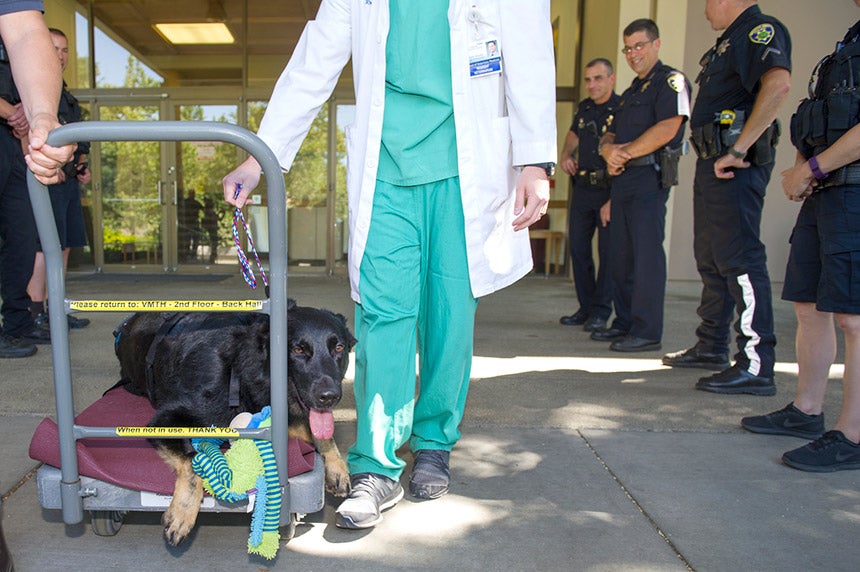
When Peydro, a K-9 police officer with the Woodland Police Department, was critically injured in the line of duty in May, he was immediately transported to the UC Davis Veterinary Medical Teaching Hospital, where he underwent emergency facial and spinal surgery. During the procedure, UC Davis veterinary neurologist Maggie Knipe and her team placed two pins in Peydro’s vertebrae to stabilize the injury. With their help, Peydro went home with his human partner, Officer Juan Barrera, nine days later.
The road from East LA to Harvard goes through Davis
UC Davis student Lucydalila Cedillo grew up in East Los Angeles in a home without books, collected recyclable cans with her mother to help support the household and didn’t know anyone who had gone to college. But on morning rides to middle school, she took to heart what her father told her about the importance of learning.
Now June’s top graduating senior has made her way across the country to a doctoral program at Harvard University to pursue a career as a professor. The first-generation college student also took the time to help others from her Boyle Heights neighborhood realize their goals.
Classroom to canyon
Water, rocks and life. Perhaps nowhere on the planet is that combination so brilliantly on display as where the Grand Canyon meets the Colorado River. That’s why, each spring, UC Davis graduate students of geology, ecology and hydrology explore the Grand Canyon by floating down the Colorado River, splitting the 225-mile river journey into two halves. And this year, it was caught on film and in interviews for all to see. Thousands have joined the journey by logging on to a new multimedia website about the UC Davis ecogeomorphology class trip exploring interdisciplinary science in the Grand Canyon.
Caterpillars guess the presidential election correctly
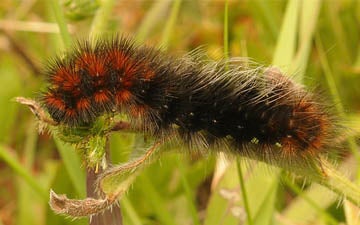
Since the 1980s, UC Davis professor Richard Karban has conducted an annual census of woolly bear caterpillars in Bodega Bay. Over the years the furry insects have correctly predicted whether a Republican or Democrat will win the presidential election, based on whether their population grows or shrinks. This year, they were a bit unsure — but as it turns out, they might have been the only pollsters to get it right.
Sunflowers move by the clock
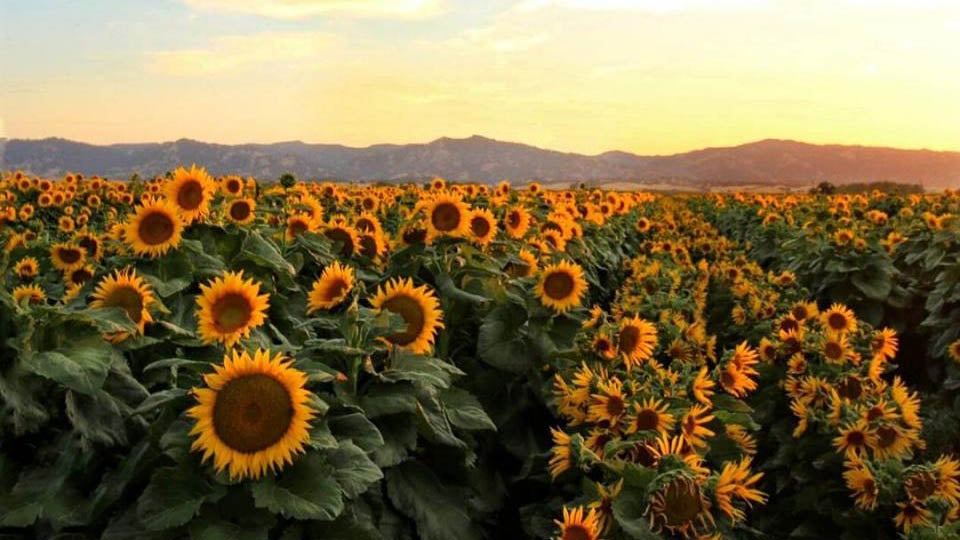
The fields of Yolo County around UC Davis are filled with bright, cheerful sunflowers, dutifully watching the rising sun. But did you know that they move? Plant biologists have discovered how sunflowers use their internal circadian clock, acting on growth hormones, to follow the sun during they day as they grow. Growing sunflowers begin their day with their heads facing east, swing west through the day, and turn back to the east at night, waiting to repeat the process when the sun comes up in the morning. While this behavior has been described by scientists for more than 100 years, it had never been associated with circadian rhythms until now.
How the moon got where it is

Earth’s moon is an unusual object in our solar system, and now there’s a new theory to explain how it got where it is. There are a couple of problems with the traditional "giant impact" theory, and now Sarah Stewart, professor of earth and planetary sciences at UC Davis, and her fellow researchers have come up with an alternative model.
Take a bow
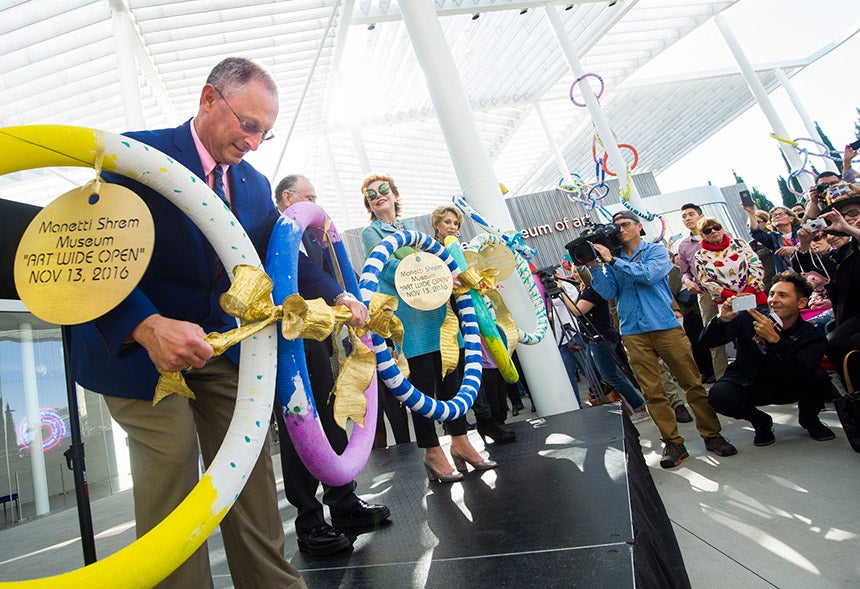
Art at UC Davis comes in a variety of forms, from musical performances to indoor and outdoor sculpture around campus. And this fall, we added two new world-class venues for teaching and experiencing art on campus — the Ann E. Pitzer Center and the Jan and Maria Manetti Shrem Museum of Art. Unveiled in September 2016, the Pitzer Center is a classroom and recital hall where students and the community can enjoy chamber and solo performances ranging from the traditional music of Java to new works written by UC Davis faculty and student composers. The Manetti Shrem Museum opened its doors to more than 2,000 visitors on opening day in November. It features five galleries, and indoor/outdoor studio and classroom space.
Minion-like robots deployed at sea
These robots, looking somewhat like the characters from Universal Studio’s animated movie Minions, and launched in the cool Pacific waters near UC Davis’ research laboratory in Bodega Bay, mimic clouds of microscopic marine larvae, such as baby crabs, mussels, clams and rockfish. The data the bots bring back provide some of the first direct confirmation of a decades-old and surprisingly contentious scientific mystery: Where do marine larvae go, how do they get there and back, and what allows them to do this? The research carries implications for a range of issues, including managing marine protected areas, fisheries, invasive species and the impacts of climate change.
President gives shoutout to UC Davis
After their six-week stay at UC Davis, our 25 Mandela Fellows — the first group examining energy issues — made a stop in Washington, D.C., where they joined other young African leaders who had had similar fellowships this summer at other universities. In greeting the fellows at a town hall on Aug. 4, President Obama acknowledged the Hawkeyes and the Buckeyes, and the Sun Devils and the Fighting Irish in the audience, referring to the mascots of some of the universities that had hosted the fellows. But what about the Aggies? The president singled us out for hosting the first class of Energy Fellows — “young people at UC Davis studying new ways to promote clean energy and fight climate change.” Thank you, Mr. President! Read about the Mandela Washington Fellowship’s Energy Institute at UC Davis.
Coach Hawk returns to Davis
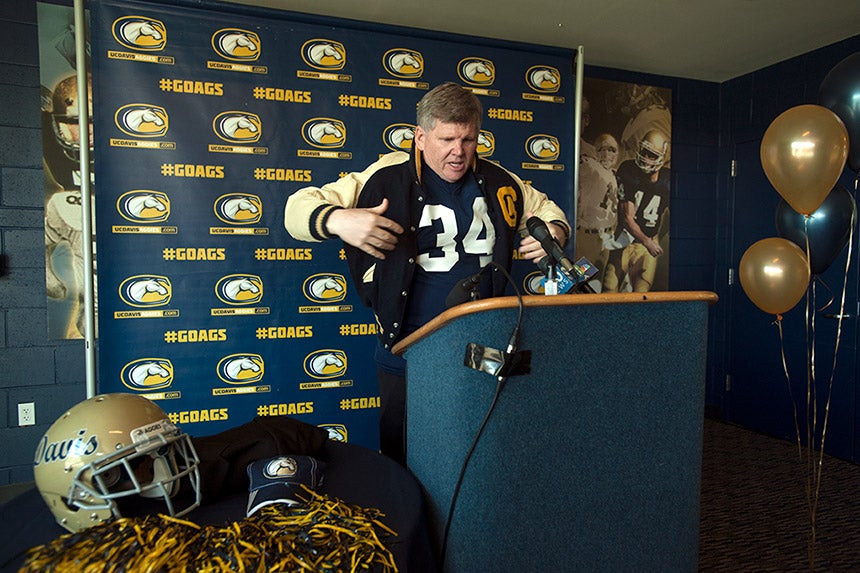
Between tearful remembrances of his time as an Aggie and bear hugs with his former coaches, Dan Hawkins ’84 was introduced to the community and members of the media as the new head football coach just after Thanksgiving at Aggie Stadium. In returning to his alma mater, Coach Hawkins stressed his desire to meld athletics and academics, saying success in one area can lift the other.
Professor is a National Book Award finalist
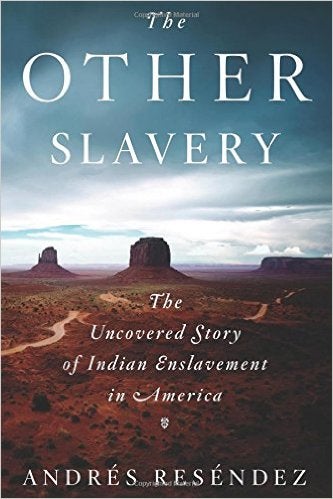
A double shot of STEM
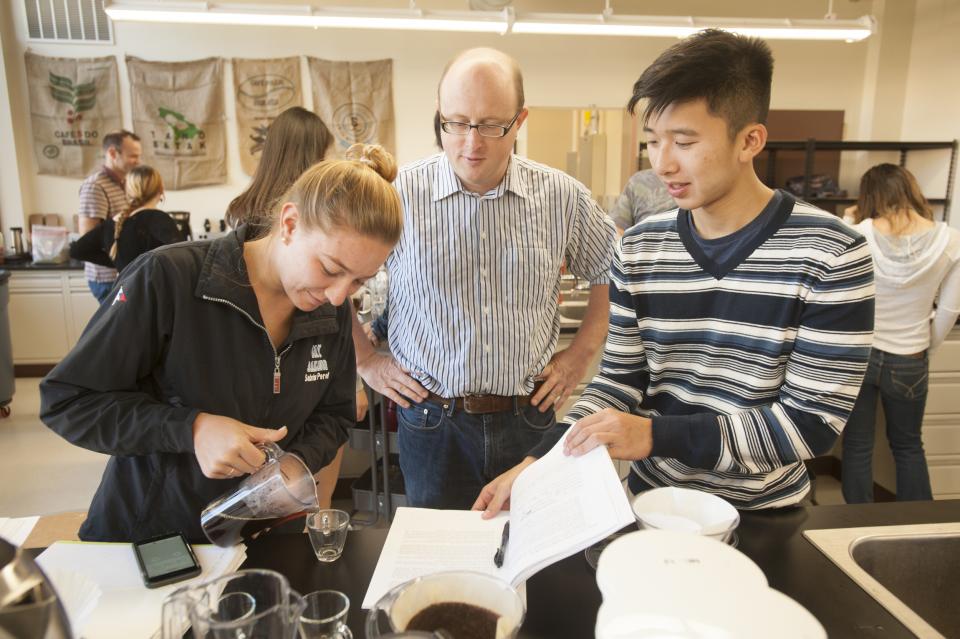
A story about the “Design of Coffee” engineering class and new Coffee Center drew national attention, including a tweet by Chelsea Clinton. Peet’s Coffee is supporting the first-of-its-kind center with a $250,000 grant. The pioneering center and pilot roaster will be devoted to post-harvest coffee research and engineering, an underrepresented field, and aims to be the leader in coffee science.
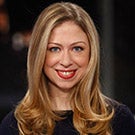
Twitter: Chelsea Clinton praises coffee class
This is awesome. Class abt #coffee is inspiring thousands of students in STEM studies: [click for link]
First state-funded firearm violence research center coming to School of Medicine
A UC Davis Medical Center emergency room doctor who works to prevent people from becoming patients in the first place will head the first state-funded firearm research center in the country. The new center, funded with an appropriation of $5 million over the next five years from the state of California, will build on unique resources already in place at UC Davis for conducting transformative violence-prevention research and draw on the power of other UC campuses and beyond to provide the scientific evidence that informs the development of effective prevention policies and programs.
Media Resources
UC Davis News and Media Relations, News and Media Relations, 530-752-1930
